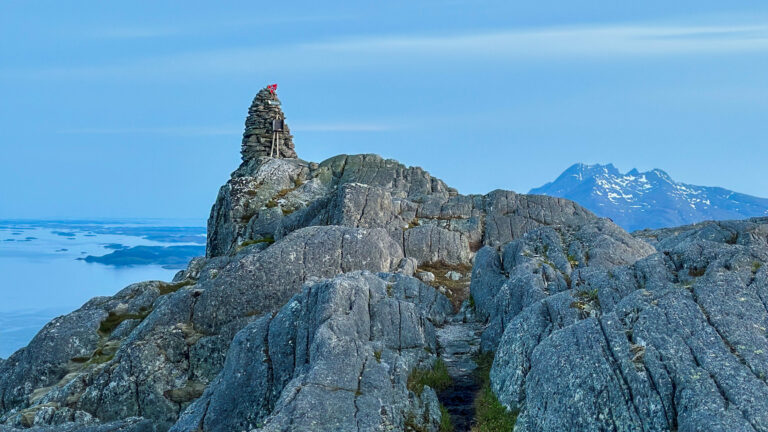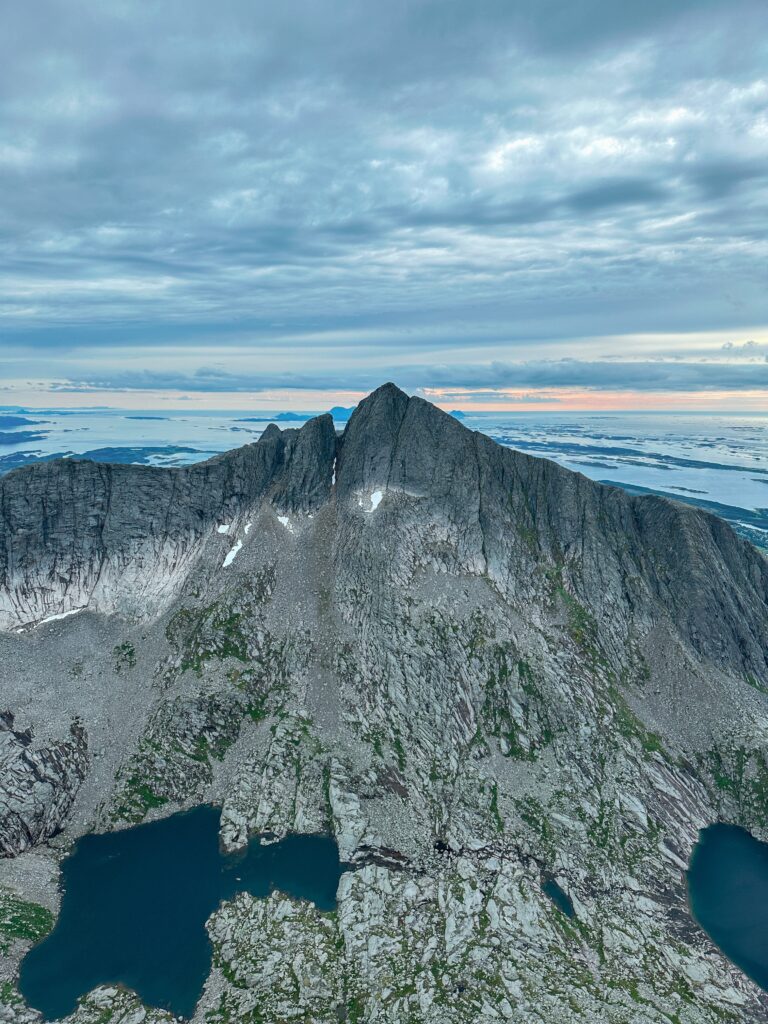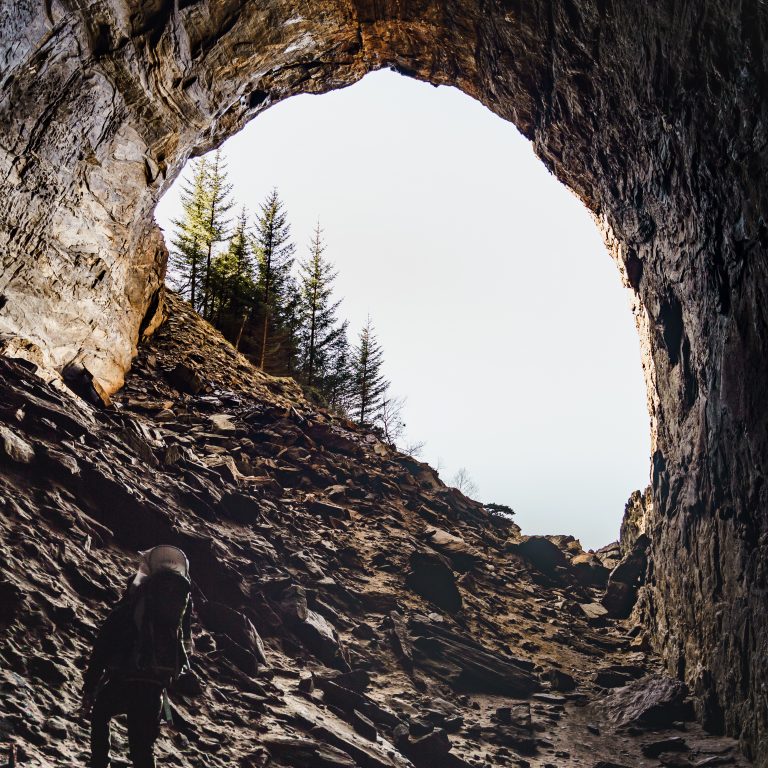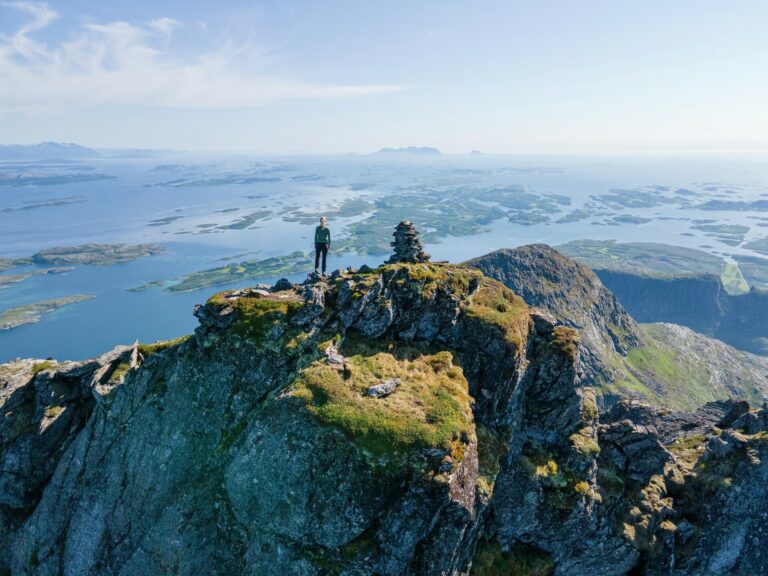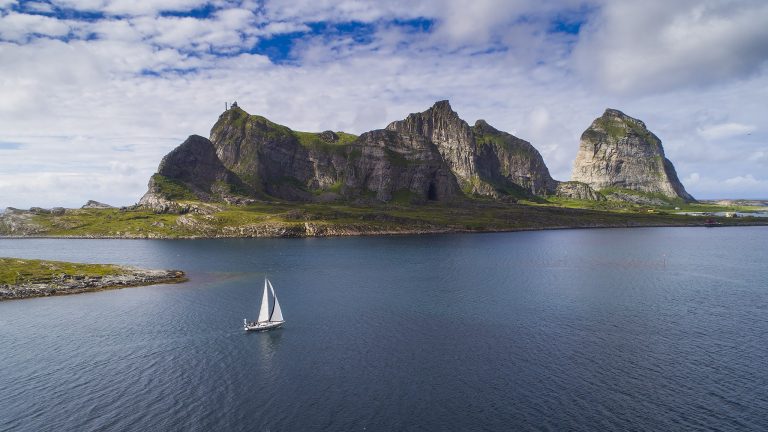A hiking adventure: Gompen
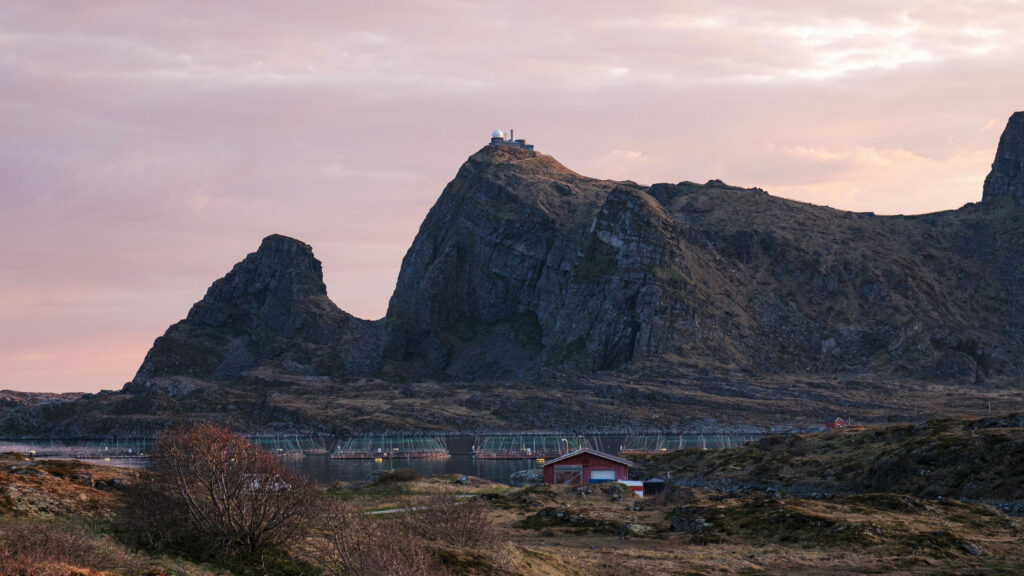 Kristoffer Møllevik / Visit Helgeland
Kristoffer Møllevik / Visit HelgelandAn easy, yet nonetheless spectacular “summit hike” at the outermost reaches of the Helgeland coast. Here, you can follow the old construction road to the radar station on “Gompen” in the Trænafjellene, on the island of Sanna in Træna.
Key info
Difficulty: Easy if you follow the road in the marked route. Moderate difficulty if you follow the trail (not marked here)
Distance oneway: Approx. 2,4 km
Elevation gain: Approx. 225-meter elevation
Duration one way: 30 minutes – 1 hour
Season: Year-round
Trailhead: The trail starts at the express boat dock
Special precautions:
Please note that the express boat has limited stops at Sanna. Plan your trip according to the schedules and keep track of time to ensure you catch the boat back to Husøy or Selvær.
If the community center is closed, there are toilets at the express boat dock.
Parts of the hike go through a dark tunnel. Bring a headlamp or flashlight.
It is not allowed to take close-up pictures of the radar station at the top, and it is also not permitted to enter the radar station area.
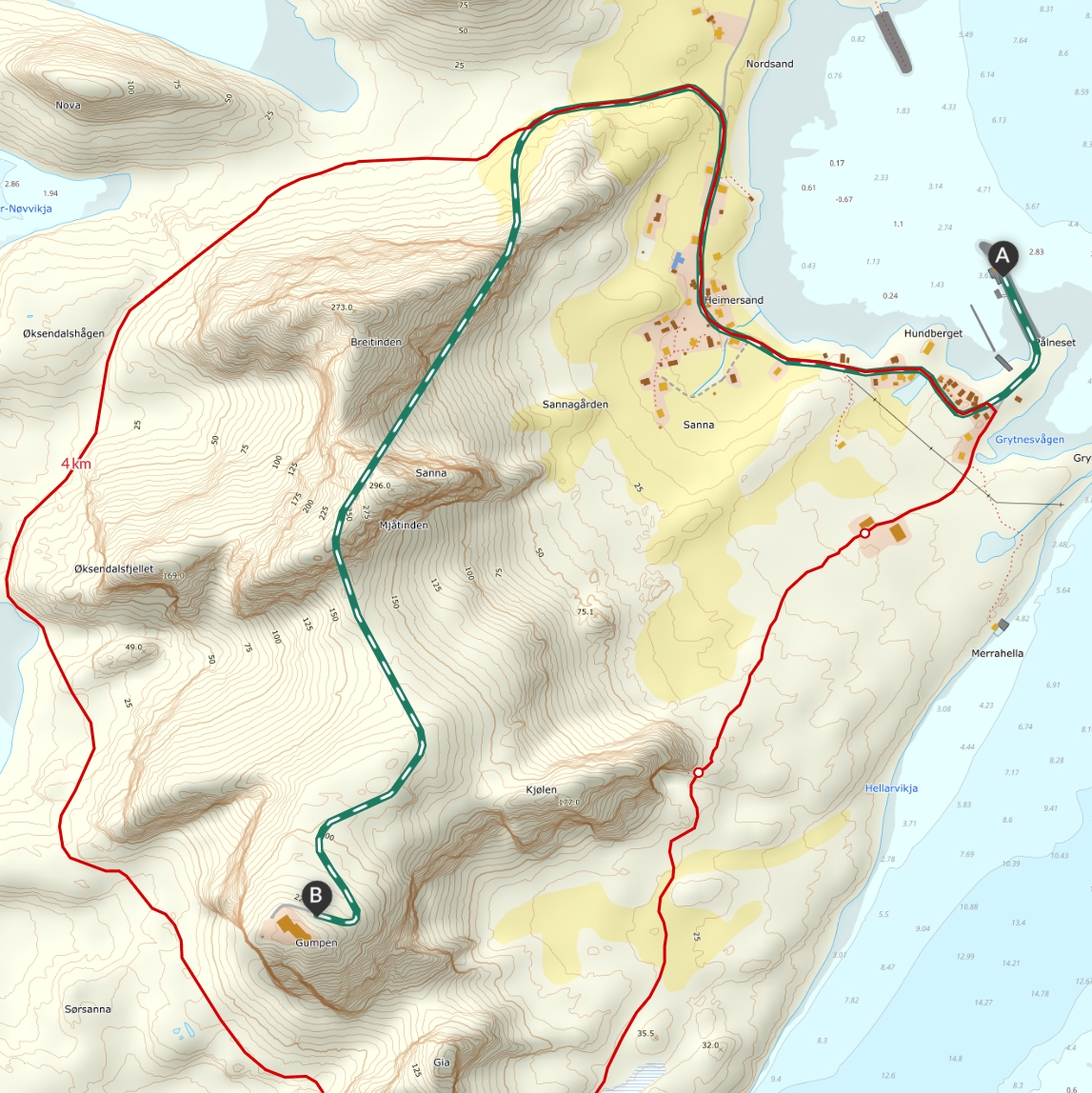 UT.no / Norgeskart
UT.no / Norgeskart
The Træn Mountains are among the most iconic and spectacular mountains in Helgeland. Far out towards the open sea, they stand as a sharp and sturdy barrier against the westerly winds. Gompen is the southernmost peak, and thanks to the construction road leading to the radar station at the top, it’s a very straightforward hike.
The hike starts from the express boat dock and first takes you through the village on Sanna. Here, there are mostly vacation homes and only a few permanent residents, but if the community center is open, we recommend stopping by for a cup of coffee after the hike.
After a short distance, you turn left and head west, ascending between Trænstaven (the solitary peak that stands like a monument on the island) and Breitinden. Here, you begin the climb up the mountain, through a tunnel. The tunnel is not illuminated, so you’ll need to bring a headlamp or flashlight. The path is steep here, but it soon becomes easier once you’re outside the tunnel.
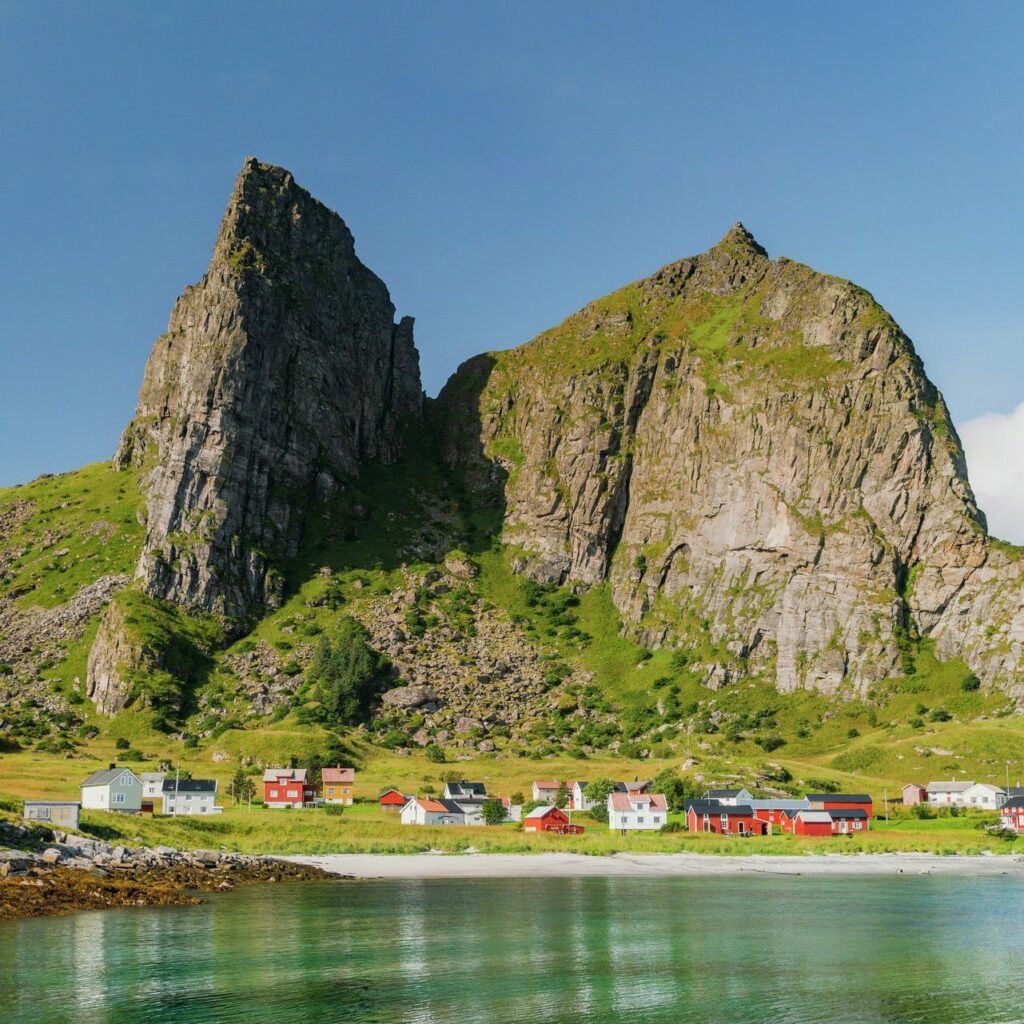 Marvin Kuhr
Marvin Kuhr
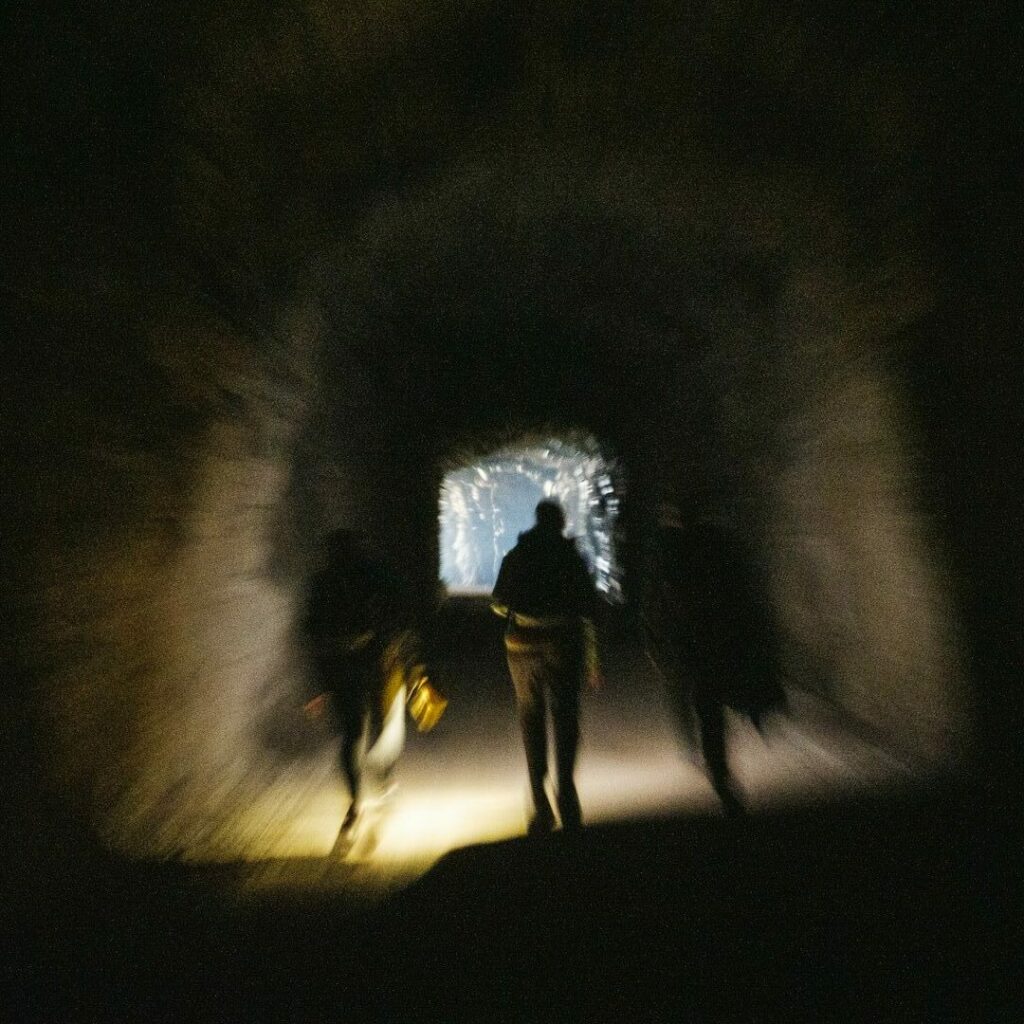
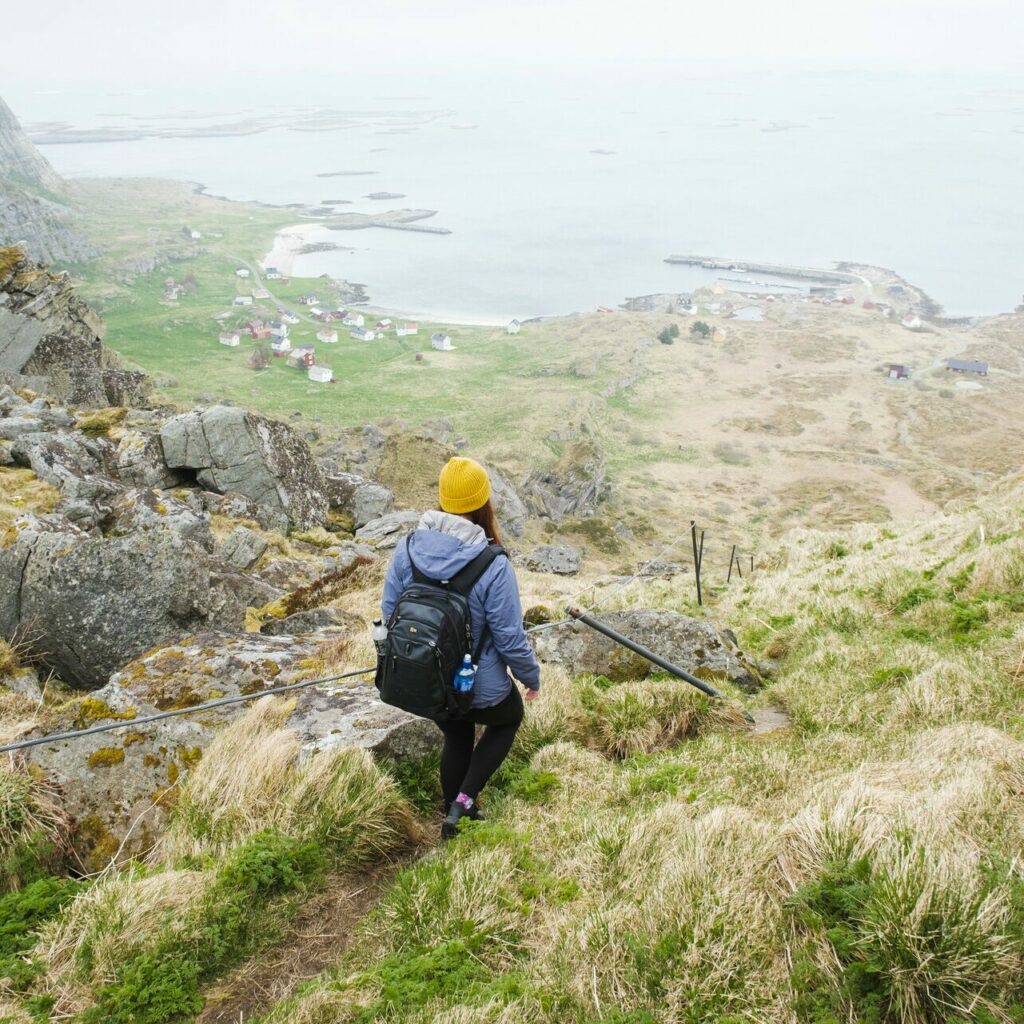 Kristoffer Møllevik / Visit Helgeland
Kristoffer Møllevik / Visit Helgeland
Out of the tunnel, the path flattens out a bit, and you reach a ridge between Mjåtinden and Gompen. Here, you’ll enjoy a fantastic view towards Sanna and Husøy in the east, Holmen, Sanna, Dørvær, and Selvær in the north, and islands like Nesøya, Hestmannen, and Lovund in the distance.
On the way down, you might spot the trail that takes you on a shorter but steeper route down from the mountain. This trail traverses much steeper terrain and is less maintained. It’s recommended only for experienced hikers wearing sturdy hiking or mountain boots and should be avoided when the terrain is wet and slippery.
1. Follow the Norwegian Mountain Code and plan according to your ability and equipment
Short hikes on easy terrain don’t require much. If you’re heading out for an hour or two in the lowlands and not gaining much elevation, you won’t need a lot of gear or be in top shape. If it gets cold or you get tired, you’re usually not far from your car.
But if you’re heading into more challenging terrain—steeper, rougher, and above the treeline where the weather is more unpredictable—you’ll need to be better prepared. You should plan the trip based on weather and conditions, be fit enough to complete it, and be ready for uneven ground, boulder fields, slippery roots, and stream crossings. That means carrying a heavier pack with extra clothes and gear, and wearing sturdy hiking boots that support your ankles.
If you’re unsure about taking on a demanding mountain hike, start with an easy or moderate one and see how it feels.
Learn more about the Norwegian Mountain Code at rodekors.no
See what you should bring on your hike on VisitNorway.com
2. Stick to marked trails
A shortcut through unfamiliar terrain can easily turn into a long and difficult detour. What looks like a trail might just be a sheep path that leads you somewhere completely unexpected. If you want the hike to be as easy or challenging—and as long or short—as planned, it’s best to follow marked trails.
If you’re heading off-trail, it’s smart to follow a GPS track. You can download a GPX file from a hike description and use it on a GPS device, a smartphone app, or a GPS watch.
UT.no and the UT app offer hike descriptions with GPS tracks. If your hike doesn’t have one, you can upload a track to ut.no/mine-turer and access it in the app. It’s free, but you’ll need to create an account.
Always carry a map and compass as backup.
UT app for Android / UT app for iPhone
3. Talk to locals or join a guided hike
Locals often have useful tips about your planned hike. They can tell you where to park, whether there’s phone coverage, if the trail is wet, if rivers are high, or suggest a better alternative. Talk to the people where you’re staying, at the local tourist office, or other hikers on the trail—you might get some truly valuable advice.
The best option is to hike with a guide. You can join a group tour or book a private guide. These are experienced locals who know the area well. They’ll help tailor the hike to your needs and share insights that add to the experience.
4. Look out for cultural landmarks
Even high up in the mountains, you’ll find traces of past human activity—some hundreds or even thousands of years old. These can include ancient trail markers, signal cairns, hunting fences, huts, and shepherd shelters. If you spot something interesting, check the KulturPunkt app to see what it is—or use the app to find a cultural site as your hiking goal.
KulturPunkt app for Android / KulturPunkt app for iPhone
KulturPunkt.org
5. Remember your responsibilities under the Right to Roam
Norway’s Right to Roam means you can hike, bike, pick berries, camp, fish, and ski almost anywhere in nature. But it also comes with responsibilities—what we call the “duties of the Right to Roam.” Leave no trace, respect wildlife, and know the rules for hunting, fishing, cycling, and access in protected areas like national parks and nature reserves.
Read more about the Right to Roam and your responsibilities at VisitNorway.com
Thank you for respecting the local communities, and for helping us preserve the natural beauty of Helgeland!
Please:
- Strive to leave no trace of your visit. Bring back all your rubbish, including used toilet paper, and discard it in the nearest rubbish bin.
- Plan your toilet visits and use the opportunity when you pass a toilet. In the wilderness, make sure you are not a nuisance to others.
- Respect the local wildlife. Keep a good distance from wildlife, livestock and birds. Keep your dog leashed.
- Respect private property. Keep a respectful distance from houses and cabins.
- Show good boating sense. Keep a good distance from shore and drive at a low speed, especially when you are close to anyone or anything on the water, including birds or animals. Avoid loud and disturbing engine noise. Be aware that some islands and nature reserves are important nesting sites, and that going ashore is prohibited during the nesting season.
- Follow the Norwegian Mountain Code (Fjellvettreglene). Plan your excursion according to the weather forecast, your skills and experience.
- Join a guided excursion or consider hiring an experienced guide, especially when you don’t have sufficient experience or knowledge to guarantee a safe trip.
Find accommodation, dining and activities in the area

Træna Kaffekollektiv – Charming coffee bar in Træna
Træna Kaffekollektiv is a small and cozy coffee bar offering stunning views over Trænfjorden, serving the finest coffee in the archipelago.
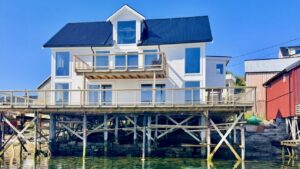
Træna Lodge – waterfront accommodation on the Helgeland coast
Stay close to the ocean and island life at Husøy in Træna. Træna Lodge is a modern wharf house with four bedrooms, a private floating dock, and easy access to fishing, culture, and everyday life in one of the most beautiful island landscapes in the world.
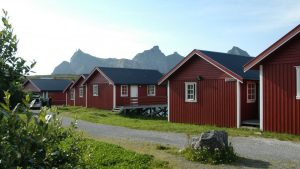
Træna Rorbuferie
The Træna archipelago is surrounded by the open sea. Træna Rorbuferie is situated on Husøya, the most populated of these islands. Here, amidst magnificent scenic surroundings, you have a golden opportunity to experience the thriving coastal culture of a vibrant island community.
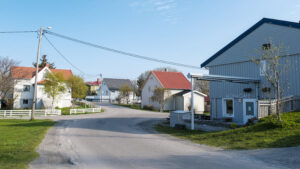
Aloha Cafe on Træna
Aloha Cafe, nestled in the heart of Høusøy in Træna, offers a delightful cafe experience with a touch of island charm. With it’s central location it’s just a short walk from the express boat and ferry terminals, the church, tourist information center, grocery store, Træna Accommodation, and House by the Sea.
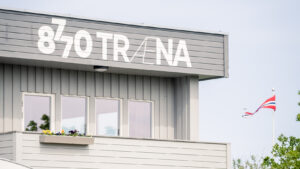
8770 Træna
If you visit Husøya, the main island in the Træna archipelago, consider staying at the cosy little hotel called 8770 Træna. Træna is a vibrant community, and here you will find good dining as well as strikingly beautiful scenery.
